- Administrator
- Albums and Singles
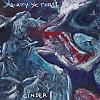 Warren Ellis, Mick Turner, and Jim White take aslightly different slant on Cinder, restricting themselves to shorter times for each piece. The distinctivesound of Dirty Three remains intact but they sound rejuvenated. This is a definite strong contender for album of the year.
Warren Ellis, Mick Turner, and Jim White take aslightly different slant on Cinder, restricting themselves to shorter times for each piece. The distinctivesound of Dirty Three remains intact but they sound rejuvenated. This is a definite strong contender for album of the year.
Tough and Go
Ellis’ violin is still the central voice of the band, singing lyricsthat no voice can sing; Turner’s guitar work is the same reservedtumbleweed picking that complements the violin so well; and as usual I amastounded at how good a drummer Jim White is: his quirky offbeats andexpressive playing takes the Dirty Three to places no ordinary drummercould reach.
Some guest musicians have been drafted to expand thegroup’s sonic palette. When “Doris” begins I thought that DirtyThree were covering U2 until the bagpipes (provided by Mark Soul)kicked in. The sound of the pipes pushes the band back into morefamiliar sounding territory. More interestingly, Chan Marshall lendsher vocals to “Great Waves,” allowing Ellis’s violin playing to sit inthe background. Her voice suits the Dirty Three’s style, as shetaps into the melancholy and romanticism that they do so well.
At first Cinder feels a little too accessible for DirtyThree. Normally I feel that I have to work a little to get into one oftheir albums and becauseof that I fear it won’t have such long lasting appeal as the likes of Ocean Songs or Whatever You Love You Are.Thankfully after repeated listens and sittings it still sounds impeccable.Sometimes I wish that some of the songs were longer but that happensall the time with Dirty Three and me. What shines most out of thisalbum is the band’s (Ellis in particular) love for Irish traditionalgroups like the Bothy Band and Planxty, Ellis has taken up the bazoukiand mandolin in recent years and obviously has been paying attention toAndy Irvine and Donal Lunny. Despite the influence, Cinderstill very much sounds like three men from Australia playing theirhearts out.
samples:
Read More
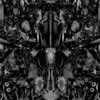 While there never seems to be any shortage of Nadja related material being released, this release of older material (recorded in 2005 and previously only available as MP3s) drops a lot of the metal elements to Baker's sound and replaces them with trumpet and violin, and emphasizes the ambience and also the underlying melody and structure of these songs.
While there never seems to be any shortage of Nadja related material being released, this release of older material (recorded in 2005 and previously only available as MP3s) drops a lot of the metal elements to Baker's sound and replaces them with trumpet and violin, and emphasizes the ambience and also the underlying melody and structure of these songs.
- Administrator
- Albums and Singles
 While there never seems to be any shortage of Nadja related material being released, this release of older material (recorded in 2005 and previously only available as MP3s) drops a lot of the metal elements to Baker's sound and replaces them with trumpet and violin, and emphasizes the ambience and also the underlying melody and structure of these songs.
While there never seems to be any shortage of Nadja related material being released, this release of older material (recorded in 2005 and previously only available as MP3s) drops a lot of the metal elements to Baker's sound and replaces them with trumpet and violin, and emphasizes the ambience and also the underlying melody and structure of these songs.
I have always felt there was a certain sameness to Nadja's work that was a detriment…too many of the albums sounded like each other, and when there were so many at any given time, they simply became too hard to discern from one another.Other than a bit of the brittle guitar distortion the band loves so well, when I heard the organic drums and plaintive guitar notes that open "Skin Like Sand" I knew what was to follow was something different.
If that wasn't enough, the cut up voice fragments and decipherable vocals were completely unexpected.Another thing that struck me is the fact that there was actual "space" in the song.Rather than the dense layers of guitars and effects that usually fill the entire mix, there is a spaciousness that gives the track a different feel entirely. Interestingly enough, that opener is probably the most traditional piece here."Feed Me Yr Kiss" focuses more on a straight forward beat and clean guitar line, with only a very sparse noisy electronic buzz in the background.Structurally it feels more like jazz influenced post-punk than anything vaguely metallic.The same goes for "Dance Dance Dance": its chiming guitar and muted trumpet resembles a lost 1984 release on 4AD.
Only in the latter moments of the album does the expected heaviness become the focus, and even then it is a different beast entirely."Take Me Out Of My" is at its core a soft, catchy pop song, but with a denser sound that gives it more weight and presence than the other pieces.The long closer "Flowerskin" is perhaps the most Nadja-like, but even then stripped to its core elements.The structure and electronic elements are familiar, but the track remains rather skeletal, focusing on the drums and vocals.After about 11 minutes the sheets of noise and distortion kick in, and while they don't become metallic, they are most definitely heavy.
I prefer this side of Aidan Baker's work.While Nadja's output sometimes stays too close to a specific metal-based formula, by letting the pop elements overshadow the heavy ones here, the album is one that stands on its own, and quite strongly.It definitely bears Baker's mark, but the result is a distinct album that showcases his strengths as a songwriter, rather than hiding them amongst layers of noise and distortion.
samples:
 
Read More
- Administrator
- Albums and Singles
 Thisalbum is the sound of Matthew Herbert nailing his long list of protestto the door of the food industry, composed and constructed by samplesof food. Each track highlights a different aspect of what Herbert seesas a wasteful business. This way of working couldeasily result in tedious, academic-sounding music but I found it veryenjoyable to listen to both as an album and as a more serious statementon what we are ingesting.
Thisalbum is the sound of Matthew Herbert nailing his long list of protestto the door of the food industry, composed and constructed by samplesof food. Each track highlights a different aspect of what Herbert seesas a wasteful business. This way of working couldeasily result in tedious, academic-sounding music but I found it veryenjoyable to listen to both as an album and as a more serious statementon what we are ingesting.
Magic and Accident
Herbert tackles issues like animal farming, the coffee industry’sinvolvement with Agent Orange, waste management and celebrityendorsements. Additionally, there is a strong political motivation toseparate the government’s role in the food industry. “TheFinal Meal of Stacey Lawton” is a piece based on a convict that hasbeen believed to have been wrongly convicted who was executed underBush in Texas. Lawton's last meal was a jar of pickles. AnotherBush-related track is the album closer “Nigella, George, Tony and Me”where Herbert recreated the meal served to Bush in Downing Street anddrove over it in a tank. This all sounds great on paper and luckily it sounds great on CD.
Plat du Jour has been crafted with an awful lot of forwardplanning and inspired decisions. Every aspect of every song has beendesigned for a reason, even as far down as the beats per minute whereHerbert has chosen significant figures from his extensive reading list.For example, “The Nine Seeds of Navdanya” is 122 bpm because there are122 million people in India without a toilet.
Plat du Jour is very unique sounding thanks to the source of the sounds. Thesamples range from the simple such as a coke can, to complex, likefield recordings of battery chickens and samples of eggs being rolledin Pyrex bowls, to the completely ridiculous situation of over 3000people munching on apples. I'm not sure how much some of the samplesare processed, some of them sound out of this world. I don't know ifthat is a criticism or a tribute to the man. A large chunk of Herbert’sprotest is against the chemicals added to our food. This is reflectedin the beautiful sleeve by Stanley Donwood made entirely from foodcolorings.
This record is truly remarkable, Herbert has thrown up a lot to digest.
samples:
Read More
- Administrator
- Albums and Singles
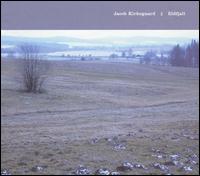 Sound artist and previous Philip Jeck collaborator, Kirkegaard presentsan album of geothermal recordings collected around geysers inIceland. Surprisingly, the results are a little flat: the record exists more likebank of archival documents, gravelly source material awaiting revamp.
Sound artist and previous Philip Jeck collaborator, Kirkegaard presentsan album of geothermal recordings collected around geysers inIceland. Surprisingly, the results are a little flat: the record exists more likebank of archival documents, gravelly source material awaiting revamp.Made entirely from accelerometer recordings, microphonesstuck in the Earth’s crust, this record has a few surprises at first. My initial problem was how one-dimensional itseemed. Familiar with similar soundartists like Rolf Julius, who manage to infuse environments of largelymonochromatic sounds and repetitious structures with real senses of immenseduration or even sacred ground, I was surprised to find Kirkegaard’s flat.
He has, no doubt, a knack for exhuming some potent texturesfrom the geysers and creases of Iceland: crazy pinging bubbles, likeball-bearings in miles of plate-grind, howling hollow noises in a crust dreamof the sky above, even a few downright mechanical clicking passages, the ones Ithink most able to exist as they do, without any noticeable or directivemanipulation. Problem is, nearly everytrack exists in the same way, the majority given no beginning or end dynamic, arrivingand retreating as simple pieces of tape, straight from the source, andromantically so, but listening suffers.
Abrupt cuts abound, making every piece feel like justanother unwieldy slab of abstract sound, aesthetically an all-over paintingwith nothing jumping out more than the whole. Saving grace: that in this case human gesture ends before sound begins, soa certain sense of awe, at the beauty or the absolute power of the landscape,is unavoidable. But the editing on thesetracks, never over eight minutes and often under three, feels always to belacking, in the jarring way that tracks begin and end with little regard forhow such potentially provocative recordings enter listening space, a problemcompounded by the fact that the unadorned nature of the sounds rarely promisesthe dynamics capable of filling such bracketed ear-time.
My aesthetic would have Eldfjallcondensed into a few much longer, more volatile, and better integrated trackswhere the quieter, dormant sounds would be allowed the full meditative drawlthey need, and the more active sounds given a more focused delivery. At appropriatevolumes and with an ear that can ignore the jarring breaks, there are timeswhen Kirkegaard’s straight-up approach feels a bit like a blessing in disguise. That recordings like these are even beingpassed around feels like progress to me, and I’ve had moments of realsubmersion within the seismic fragments herein. I even feel a sense of guilt being underwhelmed by a catalog of earthencrust noise, but it’s one I can’t shake.
samples:
Read More
- Administrator
- Albums and Singles
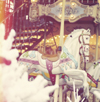 Long has Brad Rose maintained Digitalis, a beacon of experimental music nestled in the heartland of America. Spreading across the landscape like an epidemic, Rose—along with his wife, Eden—has delivered stack upon stack of gratifying discoveries both influential and enjoyable. But recently the pioneering duo has upped their own musical game, flooding an eager market with a steady stream of fantastic releases. Mechanical Gardens, however, stretches Eden and Brad’s Alter Eagle outfit to the brink of the mainstream.
Long has Brad Rose maintained Digitalis, a beacon of experimental music nestled in the heartland of America. Spreading across the landscape like an epidemic, Rose—along with his wife, Eden—has delivered stack upon stack of gratifying discoveries both influential and enjoyable. But recently the pioneering duo has upped their own musical game, flooding an eager market with a steady stream of fantastic releases. Mechanical Gardens, however, stretches Eden and Brad’s Alter Eagle outfit to the brink of the mainstream.
Borrowing from the simplified electronic formula that dominated the late '80s and early '90s, Mechanical Gardens proves the remedy for its maligned genre much as the recent rash of synth-heavy acts recovered the sinewy instrument from its new wave and B-movie imprisonment. Mixing stripped komische rhythms with a healthy dose of subdued sexuality, Brad Rose and Eden Hemming fulfill the promise offered from Mechanical Gardens’ innocent title. As the album unfurls, its buds begin to bloom until its fragrant sensuality turns its admirers into smitten kittens.
The first step is the most precarious, as "Battlegrounds" hums with a sheen not far removed from the likes of U2’s "Numb," but beware settling on such antiquated ideas, for they will only wilt Mechanical Gardens’ blend of machinery and organic chemistry. "Honey" momentarily shifts the paradigm with a catchier aesthetic. Eden and Brad trade off vocal duties, recreating the kitsch of '80s dance pop while surrounding themselves with paired down dancehall beats and a heavy melody to mask the catchiness of "Honey."
If there is a misstep to document, it’s the ill-timing of "Monsters." Its placement as the A-side finale kills the low key cool of Mechanical Gardens’s first half. This repetitive tribute to the life and work of Ian Curtis does the album little favors other than ushering in the changing mood as continued by B-side beginner, "Spy Movie." This song transforms the meditative first half mood into a militaristic march toward doom. Eden and Brad bark in unison, doling out lyrics as drill instructions as the breezy melodies of Mechanical Gardens’ first half dissolve into a panicked pace.
Despite its inclinations to stick close to a nearly forgotten formula, Mechanical Gardens finds itself in a class to itself. The innocence and cool exuded by Brad and Eden carries itself into Altar Eagle’s first proper album, resulting in an album that may be knocking on the door of mainstream electronic music but never abandons the roots of Brad or Eden.
samples:
Read More
- Administrator
- Albums and Singles
Aranos will play at Electric Picnic, Stradbally, Co. Laois, Ireland 5th of September 2010.
Read More
- Administrator
- Albums and Singles
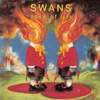 While Michael Gira certainly wrote many of his finest songs in the late '80s and early '90s, I was never able to embrace the "softer" phase of the Swans oeuvre as readily as I could the rest (a trait that is not uncommon). The main reason is that Gira's defining traits, for me, have always been his iconic intensity and his willingness to be bluntly honest and ugly. Such content was complemented perfectly by the Swans' early, more primal aesthetic, but the more traditionally melodic late-period material made things a bit more complicated.  I have no problem with the change in direction itself, but the central emphasis on melody and conventional rock structure often has a tendency to undercut or obscure the weightier themes in Gira's lyrics. Hearing Gira wrestle with that central conflict as he continues to expand his sound is what makes Love of Life both fascinating and frustrating.
While Michael Gira certainly wrote many of his finest songs in the late '80s and early '90s, I was never able to embrace the "softer" phase of the Swans oeuvre as readily as I could the rest (a trait that is not uncommon). The main reason is that Gira's defining traits, for me, have always been his iconic intensity and his willingness to be bluntly honest and ugly. Such content was complemented perfectly by the Swans' early, more primal aesthetic, but the more traditionally melodic late-period material made things a bit more complicated.  I have no problem with the change in direction itself, but the central emphasis on melody and conventional rock structure often has a tendency to undercut or obscure the weightier themes in Gira's lyrics. Hearing Gira wrestle with that central conflict as he continues to expand his sound is what makes Love of Life both fascinating and frustrating.
Many Swans fans view Love of Life's predecessor, White Light From the Mouth of Infinity, as one of the strongest albums of their career, but Love certainly has its share of enthusiastic champions as well.To my ears, this ambitious album is not quite as solid as White Light, but it definitely kept the band's momentum going while continuing to push the band's sound into new territory.I'd describe it as more of a lateral move rather than an improvement or a regression, balancing its less successful moments with a few great songs and one very important new thing: Jarboe's inspired incorporation of taped dialogue from her childhood.While Gira has always been a proponent of sampling, extended spoken-word narratives were a completely new element to the Swans sound.The use of tapes ultimately became one of the highlights of the band's 1996 masterpiece (Soundtracks for the Blind), but they were already wielded to perfection here with the untitled fifth song, a disturbingly matter-of-fact recording of Jarboe’s grandfather describing a hunting trip ("we took the heart out, it was practically torn in two.").There is a similarly striking interlude in "Her," where a 12-year old Jarboe discusses her plans to start a band with her wild friend Charlie.Lots of artists use samples, but Jarboe's tapes are personal, funny, and sad in a way that no one else has been able to replicate.
Aside from the important evolutionary steps towards tapes and droning instrumentals ("Identity"), Love of Life is also significant for having one brilliant song: the crunching, stomping, and overwhelming "In The Eyes of Nature." Gira attempts a similar fusion of melancholy and slow-motion heaviness with "The Golden Boy That Was Swallowed by the Sea," to slightly less success, losing me only with the somewhat bright choruses.I might be alone in my lukewarm praise of "Golden Boy" though, as I often see it hailed as one of the band's greatest successes.The two Jarboe-sung pieces are also excellent (if polarizing), but they just don't quite sound like they belong on the same album as the rest of the material here."She Cries (For Spider)," in particular, sounds like it would have been far more at home on a This Mortal Coil album than a Swans one (I like This Mortal Coil too though).Minor contextual grievances aside, however, "The Other Side of the World" is an achingly beautiful song.
The rest of the album is a mixed bag of very cool incidental pieces, digressions, missteps, and almost-successes.The bludgeoning quasi-industrial drums of"Amnesia" are noteworthy, simultaneously recalling Swans percussion-heavy past while anticipating many of the heavier moments on The Great Annihilator.It's also quite similar to some of Prong's better moments ("Irrelevant Thoughts," for example), which is no surprise given that 2/3 of Prong are on this album.It's nice to hear Gira snarl again once in a while.Some of the other aberrations don't fare quite as well though, particularly "The Sound of Freedom," which sounds like it could be a Pogues song played at quarter speed (until I read the lyrics, anyway).I am definitely not a fan of Gira flirting with major keys at all.
I also disliked the title song, which manages to derail some excellent drumming with its very repetitive and melodically dull vocals to exasperating effect.There's definitely a lot happening, but it is all in service of a very mediocre song.Usually Gira's laconic, deadpan vocals are a distinct asset, but they sometimes make his weaker moments sound a bit plodding.Also, sometimes the lines that give a Swans song some bite are not especially conspicuous, but I couldn't even find deeply buried bile in "Love of Life," only numbing variation of a very simple theme.
The fact that few Swans albums from this period are still in print is certainly unfortunate, but cutting Love of Life up for Various Failures does not strike me as an entirely terrible idea.It's certainly one of the more listenable and varied Swans albums, but it's also a bit uneven.Consequently, culling all of the highlights does not detract from the listening experience much at all for me: "In the Eyes of Nature" and the untitled hunting story are the only absolutely essential pieces here, but Failures even helpfully includes the entire second tier of good songs as well.The only real tragedy to Love of Life’s continued unavailability is that the cover art of Deryk Thomas was pretty spectacular.
Samples:
Read More
- Administrator
- Albums and Singles

Read More
- Administrator
- Albums and Singles

Read More
- Administrator
- Albums and Singles

Read More


